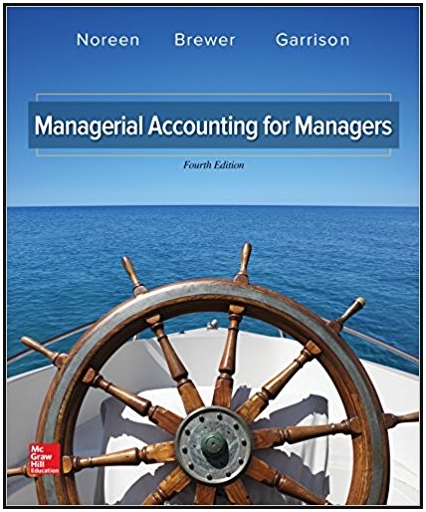Question
ASSESSMENT 2 BUSIENESS PROCESS ANALYSIS CASE STUDY GAAM is an international company that manufactures mainly hydraulic systems, building systems, and metal products. Specifically, it makes
ASSESSMENT 2 BUSIENESS PROCESS ANALYSIS CASE STUDY
GAAM is an international company that manufactures mainly hydraulic systems, building systems, and metal products. Specifically, it makes hydraulic equipment such as gear pumps and motors, telescopic cylinders, and control valves. Used in heavy-duty vehicles such as cranes, these products are sold to domestic (US) and foreign original equipment manufacturers. The company's headquarters are located in the South Australia. Employing nearly 3,800 employees around the world, it operates 27 facilities in seven countries.
GAAM decided to conduct a process reengineering project with the objective of improving its global competitive position. Your team was formed to conduct a thorough investigation of the departments in the company. You are expected to come up with a Business Process Re-engineering recommendation for improvement. The following are the overviews of the major departments that needs major changes:
OVERVIEW OF THE PURCHASING DEPARTMENT
The purchasing department is mainly responsible for the procurement of hydraulic pump inventory. Maintenance, repair, and operating supplies (MRO) are also purchased through this department. This includes any equipment that needs tooling, supplemental materials such as foundry sand, various ingredients used for pouring castings, and any other non-production related products or services.
The department is comprised of a purchasing manager, two buyers and one secretary/clerk. It purchases an average of AU$15 million in inventory items, or approximately 3,000 parts each year. An additional AU$6 million in purchases in MRO per year is also made.
Workflow - MAINTENANCE, REPAIR AND OPERATIONS (MRO)
The purchasing department receives requests for MRO supplies from 36 different individuals within the company. These requests can take the form of either an MRO card or a purchase requisition. Cards are used for items purchased regularly while purchase requisitions are used for new items. Each of these individuals has a limit, up to which they are authorized to make a purchase. The limits usually range from AU$500 to AU$1,000. If this limit is exceeded, the card/requisition form must be endorsed by the individual who is at the next higher ranking in terms of purchase authority. Hence, there is a "chain of command" that must be followed to authorize all MRO purchases.
Once the card/ requisition reaches the purchasing department, it is reviewed and signed by the MRO buyer. A P/O is then generated for the item(s) being purchased. If the item is requested using a card, the card is returned back to the department that requests the purchase after the purchase has been placed. Currently, approximately 8,000 cards are maintained in various departments. If the item was requested using a purchase requisition, the form is filed in the purchasing department. Distribution of these P/Os is the same as for inventory purchases. These P/Os are also kept in the P/O program.
In certain instances, individuals other than the MRO buyer will make purchases. If there is an emergency situation in which an item is needed immediately, the department will require a purchase number which is different from the sequentially based numbers used on the normal P/Os. Once this number is set aside, the purchase can be made. The purchasing department will then complete the P/O and distribute it normally.
The purchasing department will on a daily basis get MRO requisitions for new items. In addition, many purchases are for old or outdated replacement parts. This requires the MRO buyer to conduct
significant vendor and pricing research. This research represents a majority of the MRO buyer's total work time.
BUSINESS PROCESS ANALYSIS INSTRUCTIONS:
In groups of 2 or 3, analyse the organisation brief provided. For the business process described in the organisation's brief:
1. identify:
a. participants
b. inputs
c. outputs
2. Develop the current business process model.
3. Identify and describe current strengths and inefficiencies that are present in the current system.
4. Suggest ways that the business process inefficiencies could be corrected through business process re-engineering and the use of IT .
5. Identify technologies that can help improve the business process.
6. Show the proposed business process model and explain how the newly re-engineered system would operate.
Suggested document content (you can add more sections if needed):
? Introduction - background of the case study
? Purpose -. A clear answer to why we work through this process will guide your analysis.
? Participants, Inputs and Outputs to the current system
? Process Flow or Activity Descriptions -a list of the steps completed by people in certain roles. This is the primary or most common path through the business process.
? Exceptions - In addition to the primary path, you want to include variations. What happens if information on a form is illegible, a required piece of information is not provided, or a special condition is met?
? Business Process Model -visual model showing the primary activity steps and exceptions. When multiple roles are involved, a swimlane diagram is a good choice
? Process strengths - what were the strengths of the current business process
? Process inefficiencies - what were the problems with the current processes
? Use of Information Technology - proposed IT solutions
? Business Process Re-engineering - how process can be improved through process re-engineering and through the use of IT. Discuss suggested technologies and how it can be used.
? Proposed Workflow Diagram - visual model of the new proposed business process
? References
Step by Step Solution
There are 3 Steps involved in it
Step: 1

Get Instant Access to Expert-Tailored Solutions
See step-by-step solutions with expert insights and AI powered tools for academic success
Step: 2

Step: 3

Ace Your Homework with AI
Get the answers you need in no time with our AI-driven, step-by-step assistance
Get Started


